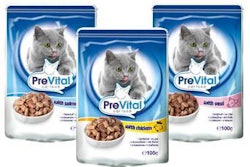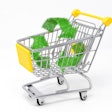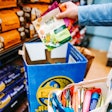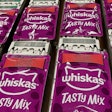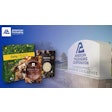Dog and cat food sales will reach US$69 billion dollars globally this year, according to the latest data from Euromonitor International. While treats are the fastest-growing segments—dog treat retail sales are increasing nearly 5.5% a year and cat treats, about 5.1%—dry petfood for both dogs and cats is also projected to grow strongly through at least 2018.
Globally, dry petfood already predominates over wet, 74% versus 26%, according to Euromonitor, which presented its data during a recent webinar, "Global pet care in an age of economic uncertainty." The good news is that, despite the webinar title, things are not really that uncertain for pet care overall or petfood specifically; growth is still the key concept.
The US leads the world in dry petfood sales, which is no surprise, considering it's the largest petfood market by far. What's new is that Brazil now ranks second globally, ahead of Japan (see Table 1). That is one reason Brazil has leapfrogged Japan and other traditional petfood markets in total global petfood sales, in a relatively short time. During the webinar, Euromonitor pointed out how Brazil is now also the second-largest pet care market overall, moving past both Japan and UK; 10 years ago, the Latin American powerhouse may have barely made the top 10 list of pet care markets.
Note that Mexico is on the list of dry petfood leaders. It is also the third fastest-growing market globally for dog and cat food retail sales, according to Euromonitor, behind only Brazil and Russia . The hot growth of these Latin American markets, where dry petfood predominates due to cost and storage factors, means dry products will continue to grow a full 12.5% in volume sales, from 16 billion tons in 2013 to 18 billion in 2018.
In contrast, wet petfood sales growth is flat and will remain that way, Euromonitor says. It's easy to see why by looking at the top five markets currently for wet petfood. Except for the leader, the US, the other four markets are all in Western Europe, where petfood sales have, on average, been flat for a few years now. In some Western European markets, sales have even declined.
Petfood packaging formats are following these trends, too. Currently, metal cans are the leading type of petfood packaging, with over 15 billion units used in 2012, followed by stand-up pouches at about 11.5 billion units, Euromonitor says. Flexible plastic, aluminum trays and flexible paper round out the top five formats, though those numbered only about 2 billion to 4 billion units in 2012.
Looking ahead to 2018, however, use of metal cans will grow only slightly, by about 1%, while growth in stand-up pouches will increase by nearly 4.5%—mirroring the flat sales of wet petfood (mostly packaged in cans) and the rising sales of dry petfood, which more and more is packaged in stand-up pouches, along with formats like flexible plastic and flexible paper.
Another higher-growth format will be flexible aluminum/plastic at almost 4%, reflecting the increase in smaller, more convenient packages that fall in line with growing trends such as urban populations, aging pet owners, smaller breeds of dogs and, in some markets, cats. Flexible plastic, aluminum trays, flexible paper and thin-wall plastic containers will all experience growth of 2% to 3% by 2018, according to Euromonitor.





